HAZOP- an abbreviated term of “HAZards and OPerability”- is defined as: “The application of a formal systematic critical examination of the process and engineering intentions of the new facilities, to assess the hazard potential of mal-operation or malfunction of individual items of equipment and the consequent effects on the facility as a whole”.
It is a rigorous examination to the process and engineering facets of a process facility, based on “guide-words” to help provoke thoughts about the way deviations from the intended operating conditions can lead to hazardous situations or operability problems.
Objectives of HAZOP
The objective of HAZOP is to assess the hazard potential of mal-operation or malfunction of equipment and the consequent effects on the facility. It attempts to identify how a process may deviate from the design intent.
The emphasis in the HAZOP study is on identifying potential problems, not necessarily on solving them. However, if a solution is obvious during the study, it is recorded or incorporated immediately while the study is in progress.
The HAZOP was developed with the purpose of reducing the chances of overlooking disturbances when conducting the review of Process/Utility Engineering Flow Scheme and Piping and Instrument Diagrams (P&IDs) which could lead to a hazardous situation or operability issues, especially in the design of:
– Plants involving new processes or significantly altered processes that introduce significant inventory of toxic or flammable materials, where little practical experience is available;
– Modern refinery or gas plant processes operating at extreme temperatures and pressures, where the consequences of a failure are likely to be more serious than on older facility;
– Complex modification of an existing plant that affects multiple piping circuits and large number of equipment items; or could take the process or system outside of safe operating limit.
Concept of HAZOP
The HAZOP study takes a full description of the process, systematically questions every part of it to discover how deviation from the design intent can occur and decides whether these deviations can give rise to hazards.
The questioning is focused in turn on every part of the design (Node). Each node is subjected to a number of deviations formulated around a set of guide-words. Having examined one part of the design and recorded any potential hazards associated with it, the study progresses to focus on the next part of the design. The examination is repeated until the whole process or section intended to study.
The HAZOP team is composed of individuals representing a variety of departments/specialties. This multi-disciplinary team concept allows the various viewpoints of the team members to stimulate the thinking of the other team members and results in creative thinking. Consequently, a more thorough review is achieved than would occur if members of the team individually reviewed the same process.
Guide Words
These are simple words, used to qualify the design intention of the equipment, in order to guide and stimulate the creative thinking process and so discover deviation from these intentions. The list of typical guide words is given in Table 1 below:
|
Guide Words |
Meanings |
Deviations |
| NO or NOT | The complete negation of these intentions | No flow, No pressure, etc. |
| MORE | Quantitative increases | More temperature, more pressure, more level, etc. |
| LESS | Quantitative decreases | Less flow, less pressure, less temperature, etc. |
| AS WELL AS | Qualitative increases | Contamination, extra phase present |
| PART OF | Qualitative decreases | Part of composition |
| REVERSE | The logical opposite of the intention | Reverse flow |
| OTHER THAN | Complete substitution | Anything else apart from normal operation that can happen, e.g. start-up, shutdown, maintenance, failure of utilities, etc. |
Table 1- List of typical HAZOP Guide Words
Typical HAZOP Flowchart
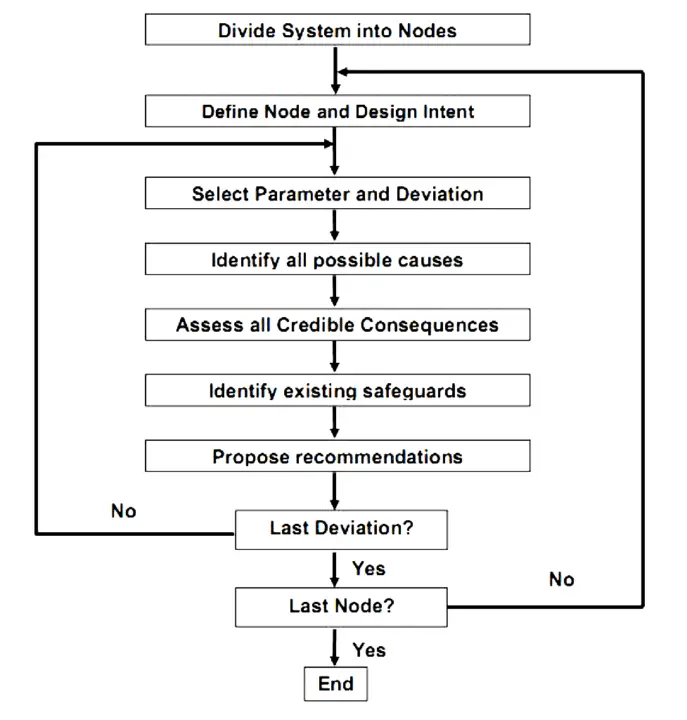
Typical HAZOP Worksheet
HAZOP Team Composition
A HAZOP team comprises a Leader (Chairman), a Scribe (Recorder) and team members.
- Leader: the person who leads and facilitates the HAZOP study by asking questions of the team.
- Scribe: the person who records the discussions (worksheet)
- Members: who represent of each of the key disciplines involved in the facility such as Process design, Operations, Control & Instrument, Safety, etc. Team members provide essential inputs and discussions to HAZOP study as per their knowledge and experience of the process under study.
Typical documents needed for HAZOP Study
- Process Flow Diagram (PFS or PFD)
- Description of the process
- Piping and Instrumentation Diagram (P&ID)
- Process Calculations
- Process Datasheets
- Instrument Datasheets
- Interlock Schedules (Cause and Effect Chart)
- Layout Requirements
- Hazardous Area Classification
- Incident Records (for existing plant HAZOP)
- Modification Records (for existing plant HAZOP)
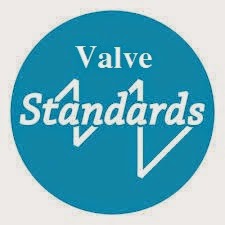

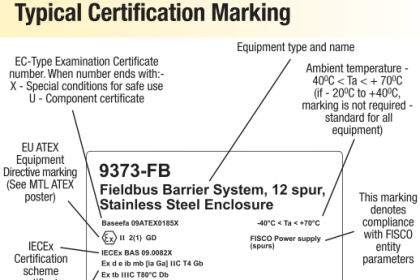
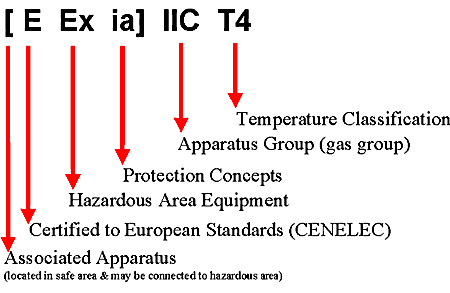
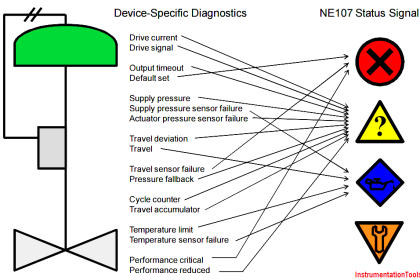
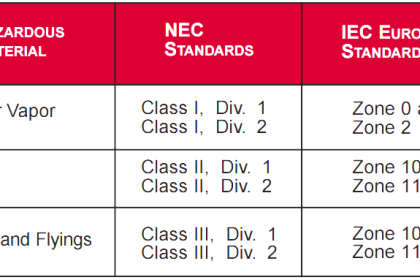

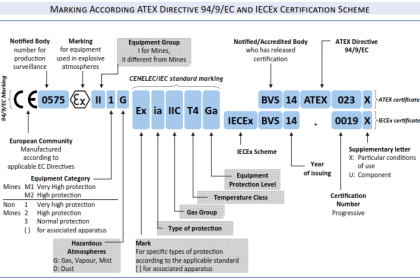


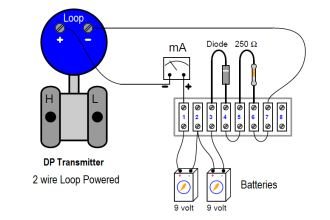
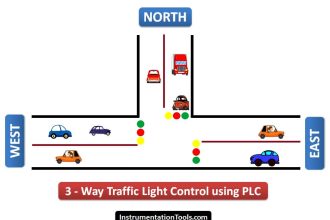

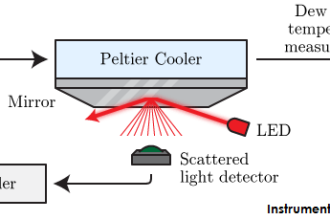

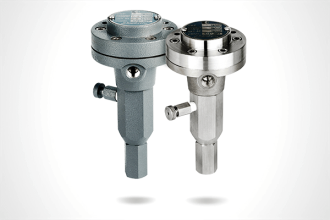

Dear Writer
According to above article ,i can say HAZARD created to protect devices and facilities from any damage due to unexpected measures comes from bad design or bad operation especially for process units deal inside Hazard Area like Gasoline production unit or Hydrogen production unit ..etc but i think here also another advantage for HAZARD is to protect workers from up normal operating condition whether comes from mistake operation or up normal process out put to exceeds the set point despite of control system already designed to protect equipment but i think HAZARD also protects workers from such cases to expect what will happen if the pressure or Temp or flow increased ..etc for all physical parameters we already manage to put set point for each with LO/HIGH level of Alarm then go to Shut Down if it is first class shut down not second class i.e. only Alarm and can be reset if it is not real